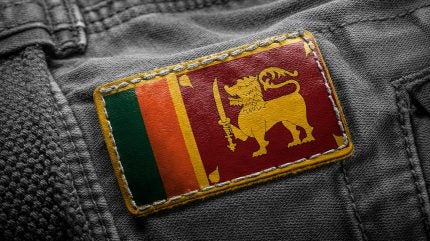
When combined with direct exports of textiles, Sri Lanka’s overall export value surpassed the $5bn mark, with JAAF suggesting it showcases the country’s resilience in the face of both local and global adversities.
Sri Lanka’s apparel growth and key market performance
In 2019, Sri Lanka’s apparel exports stood at $5.3bn, which means that the 2024 figures represent a 10.3% shortfall compared to that benchmark year, which was before the pandemic and economic crisis.
This contrast underlines the necessity for strategic efforts to recover lost momentum and to surpass the growth levels seen before the global health crisis.
JAAF points out the sector has demonstrated resilience over the past five years despite the pandemic-induced dip in 2020 when exports plummeted to $4.1bn, — a 22% drop from 2019.
After peaking temporarily in 2022 due to overestimated post-Covid recovery expectations, the industry faced challenges again in 2023 due to inflationary pressures and reduced consumer spending. The current year’s growth also reflects pricing pressures faced by the industry.
At the same time, key trends in market performance suggest encouraging developments:
US: Exports to the US grew by 5.23% to $1.9bn in 2024, yet this remains 19.4% below 2019 figures.
UK: The UK showed a strong growth of 7.65%, nearing 2019 levels, buoyed by demand for ethically and sustainably produced garments.
EU: The market registered a modest growth of 0.81% but maintained its position in an increasingly regulated and highly competitive market.
Emerging markets: During the year, exports to other destinations increased by 10.13%, reflecting both successful market expansion and the industry’s growing trend of directly labelling, packing, and shipping to third countries for customers.
JAAF sees fostering domestic fabric production and supply chain verticality as essential for sustained recovery and to maintain a competitive edge in the industry.
Sri Lanka’s Eravur Textile Zone spans more than 300 acres and is poised to offer opportunities for various textile manufacturing verticals including dyeing, washing, knitting, and weaving. This initiative aims to save foreign exchange, reduce lead times, and strengthen the appeal of Sri Lankan exports to global buyers who are increasingly seeking traceability and sustainability.
JAAF secretary-general Yohan Lawrence says: “The Eravur Textile Zone is more than just an initiative; it’s a lifeline for the industry. Localising fabric production is crucial to increasing competitiveness and meeting the demands of global markets.”
Policy actions and collaborations
JAAF stresses the necessity of ongoing collaboration between industry players and government bodies. Key policy actions such as improved market access, infrastructural projects like Eravur Textile Zone, stable electricity pricing, and resolving operational bottlenecks at Colombo Port are crucial for sustained growth.
The industry welcomes recent adjustments to electricity tariffs as Sri Lankan energy costs have traditionally been higher than those of competitors. JAAF advocates for Public Utilities Commission of Sri Lanka (PUCSL)’s independence to ensure cost-effective generation mixes that benefit consumers through fair tariffs.
International cooperation
In a collaborative move with Indonesia, Sri Lanka has applied to UK Developing Countries Trading Scheme (DCTS) authorities for cumulation of Indonesian fabrics with Sri Lankan apparel. If approved, this would enable duty-free access for apparel made in Sri Lanka using Indonesian fabric into the UK market, potentially opening new avenues for growth.
“Reclaiming pre-2019 levels and setting higher benchmarks is a challenge that requires a collective effort. Strategic investments and reforms can position Sri Lanka’s apparel sector to cross $6bn in export earnings, strengthening its reputation as a global leader in quality and ethical manufacturing,” adds Lawrence.



